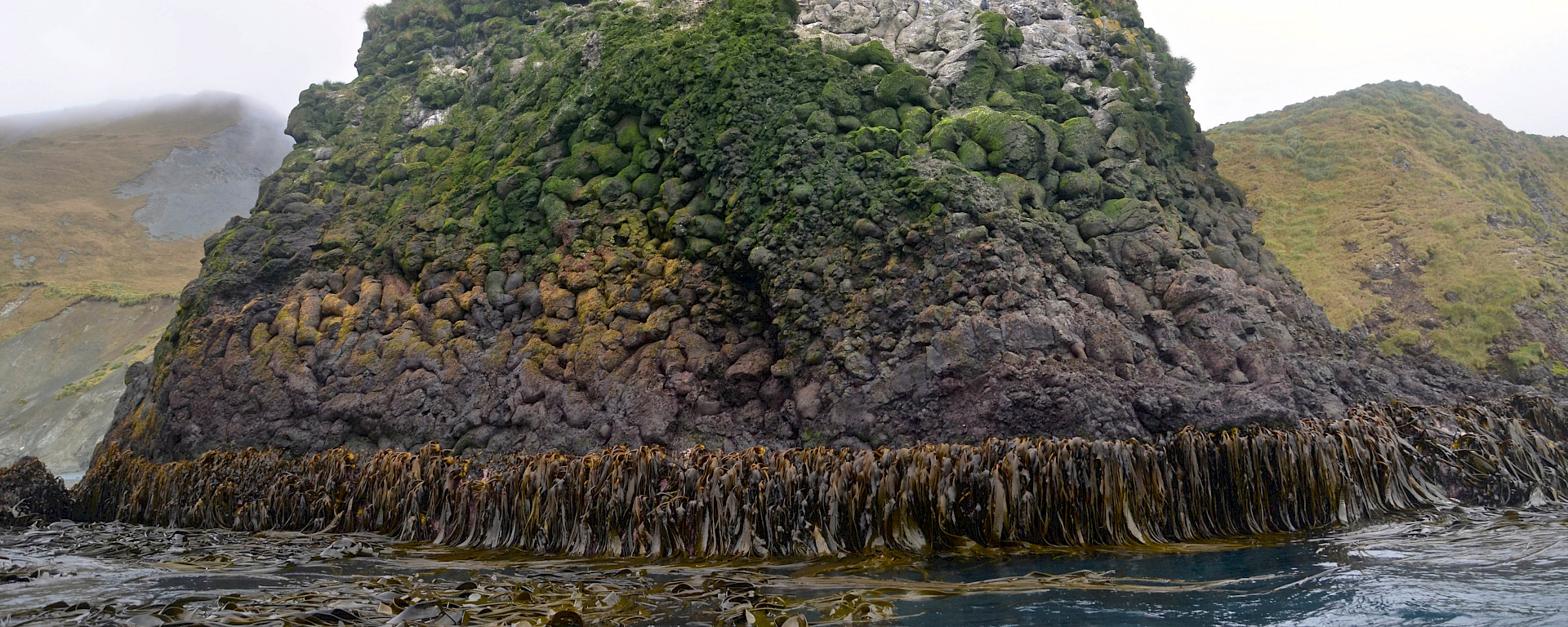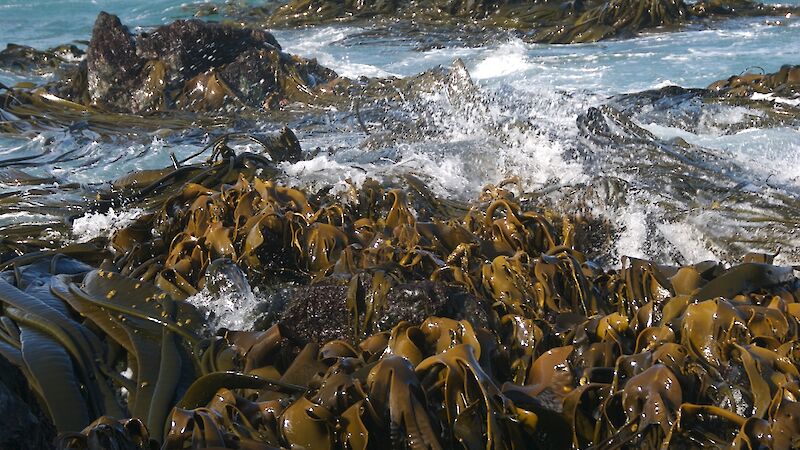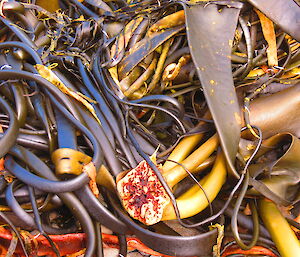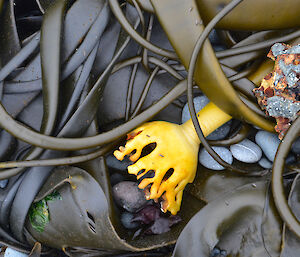The bull kelp Durvillaea antarctica is thought to be the strongest kelp in the world. It is able to withstand the massive seas that are characteristic of the Southern Ocean.
Kelp has one of the fastest growth rates of any of the marine plants. Giant kelp has recorded up to 60 cm, or 3 kg of dry weight per square metre of habitat, per day.
Distribution
Kelps are important contributors to some Antarctic bottom communities. However, it is in sub-Antarctic latitudes that they dominate.
Two main species occur at Macquarie Island. The leathery bull kelp occupies the bottom of the rocky shore. The giant kelp Macrocystis pyrifera forms dense forests at depths greater than 6 metres. Both species can reach lengths of over 20 m.
At Heard Island, only bull kelp is present. Heard Island lies below the Antarctic Convergence, and experiences much lower water temperatures. In Heard Island’s kelp zone, one square metre of rocky shore may support up to 47 kelp plants, and over 200 kg of plant tissue.
Bull kelp and giant kelp have very buoyant fronds that are capable of supporting whole plants at sea. Bull kelp is exceptionally buoyant. At Macquarie Island, bull kelp has carried boulders weighing up to 75 kg from the lower to upper shore.
Many kelp-associated species are found throughout the islands of the sub-Antarctic. One theory is that kelp rafts transport these animals between the far-flung islands. Recent surveys estimate that, between the latitudes of 46–53°S, over 70 million plants are afloat at any one time.
Kelp habitats
Kelp’s fast growth rates make it an important primary producer. It supplies food into nearshore and intertidal marine habitats. Some animals, such as sea-urchins, shells and small crustaceans, feed directly on kelp. Most consumers benefit through the breakdown of detached kelp plants.
Kelp plants have a strong ‘root’ system, known as a holdfast, that attaches them to the substrate. Strong waves in the Southern Ocean can tear off whole plants and fling them onto nearby beaches. Smaller pieces of kelp also break off during heavy seas. These may strand on local beaches or sink into deeper waters. Wherever they end up, detached kelp becomes a food source for scavenging animals. Gradually they break down, returning nutrients back into coastal waters.
Kelp provides a refuge from the harsh physical environment for many organisms. Long fronds of bull kelp are often packed onto the lower shore, absorbing energy from crashing waves. This creates a lower energy environment where marine life abounds. Small plants and animals are found living between the large holdfasts of kelp. Many animals also live within the holdfast itself.
The holdfast
The holdfast of a bull kelp is a solid hemisphere of tough tissue. A species of small isopod crustacean (Limnoria) makes its living consuming this tissue. In the process, the holdfast becomes riddled with tunnels and chambers. Other small invertebrates use these as living spaces.
Different species of Limnoria are the primary space providers at Macquarie Island (L. stephenseni) and Heard Island (L. antarctica).
The holdfasts on these islands support more diversity than any other shore habitat. There are over 90 species of invertebrate finding shelter in the tunnels and chambers that riddle their large masses. A typical holdfast community includes:
- worms
- molluscs
- mites
- sea-stars
- sea-cucumbers
- a large variety of crustaceans.
The diversity of organisms in the holdfast makes it a valuable monitoring tool for changes in the shore environment. In 1987, there was a small oil spill at Macquarie Island. The holdfast community of bull kelp was the most sensitive indicator of the effects and recovery.





